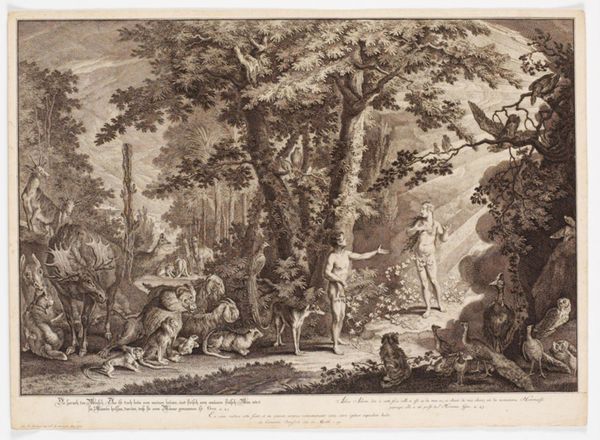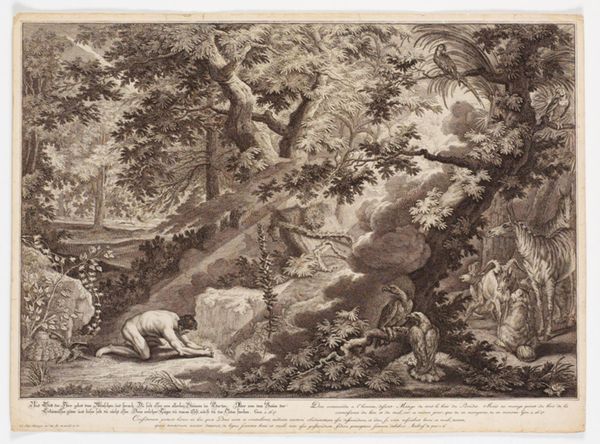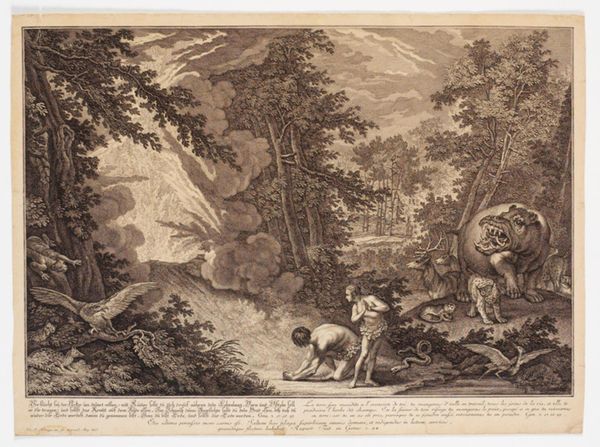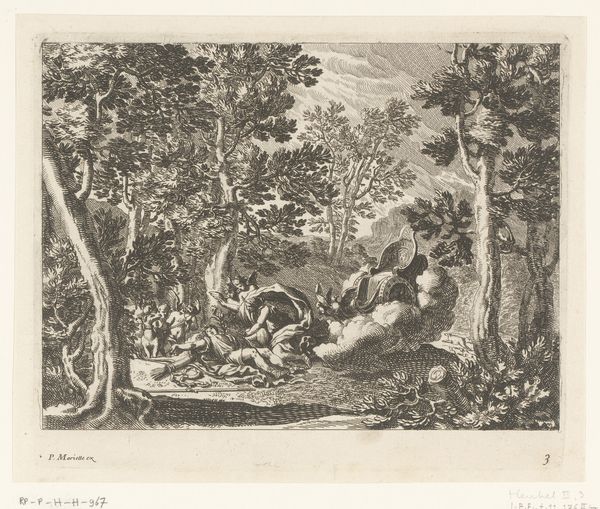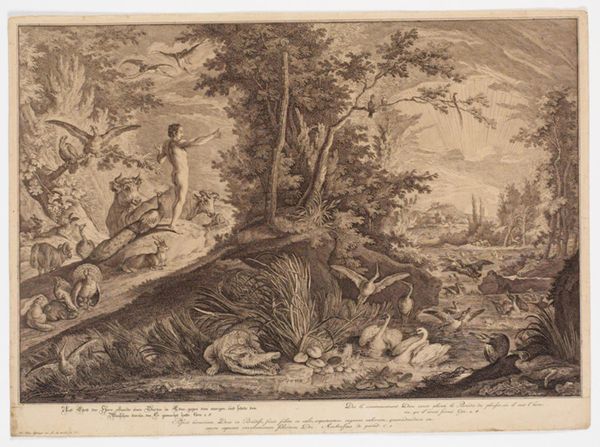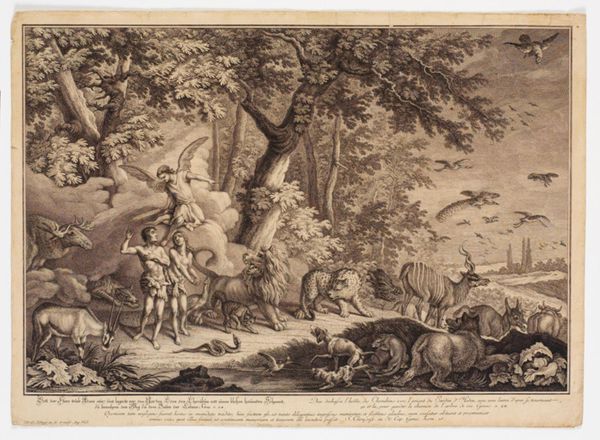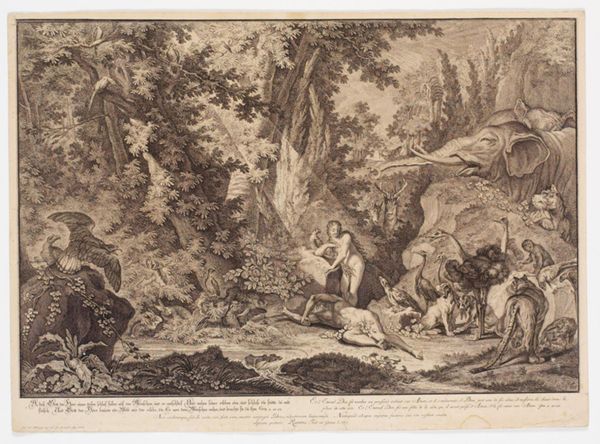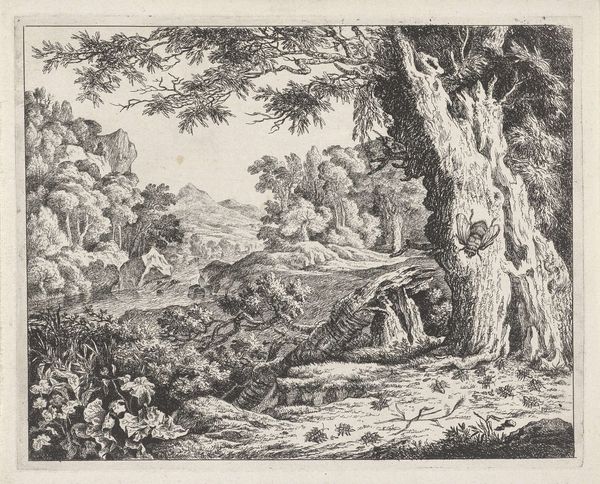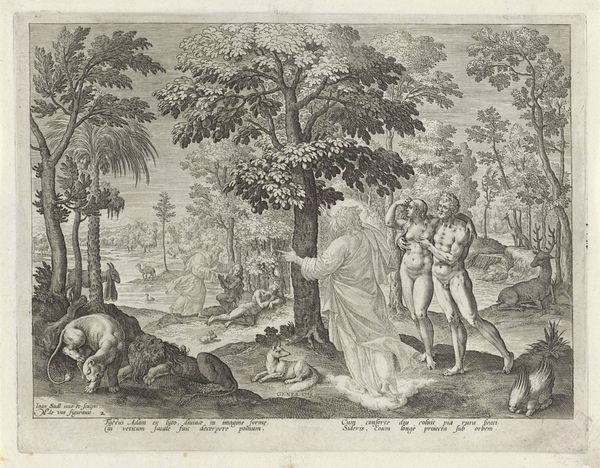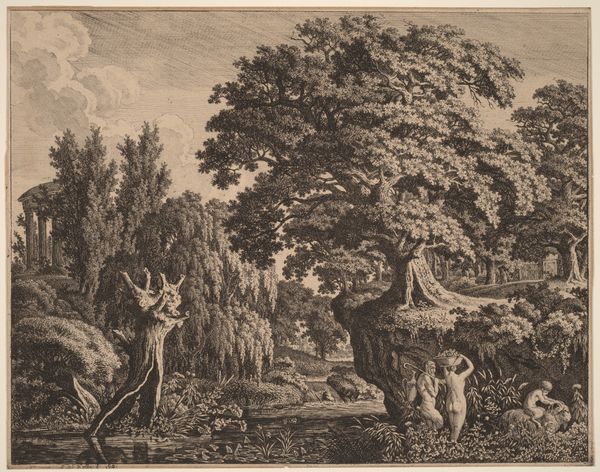
print, engraving
#
baroque
# print
#
landscape
#
charcoal drawing
#
figuration
#
line
#
history-painting
#
engraving
Dimensions: 393 mm (height) x 540 mm (width) (bladmaal)
Editor: This is "Eva plukker æblet på kundskabens træ," or "Eve Plucking the Apple from the Tree of Knowledge," an 18th-century engraving by Johann Elias Ridinger. It's incredibly detailed for a print. What really strikes me is how the whole scene is composed – there’s this abundance of flora and fauna all rendered so precisely. How do you see this work? Curator: As a materialist, I immediately consider the engraving process itself. Think of the labor involved in creating such fine lines, the repetitive action, and the tools needed to produce this image. This wasn't simply about illustrating a biblical story, but also about demonstrating a level of skill and craftsmanship deeply embedded in a specific economic context of print production and distribution. Editor: That's interesting. I hadn’t really considered the labor aspect so much. So, it’s less about the Garden of Eden and more about the means of production? Curator: Not exclusively, but it’s essential to acknowledge the materials and social conditions underpinning its creation. This print isn't just an artwork; it's a commodity. Its value lies not only in its aesthetic qualities but also in its replicability, distribution, and potential for generating capital within a developing market for such images. Consider the access and control over the raw materials - the paper, the metal plate - these things imply wealth. Editor: So, you're saying it’s a demonstration of both artistic skill and economic power, translated into a readily reproducible image? Curator: Precisely. It collapses the traditional boundaries between craft and art. And questions its consumption at different levels of society. How are prints, versus paintings, valued at this time? How might the materials signal status or religious affiliation, such as Catholicism? Editor: I see. So by looking at the 'how' and 'why' it was made, we can understand more about the society that produced it, than simply reading it as a bible illustration. Curator: Exactly. Analyzing Ridinger’s "Eva plukker æblet…" through a materialist lens reveals a complex web of labor, material, and consumption, shifting the focus from divine narrative to earthly realities. Editor: This perspective really changes my understanding of the print; it's far more complex than I initially thought. Thanks for sharing.
Comments
No comments
Be the first to comment and join the conversation on the ultimate creative platform.
